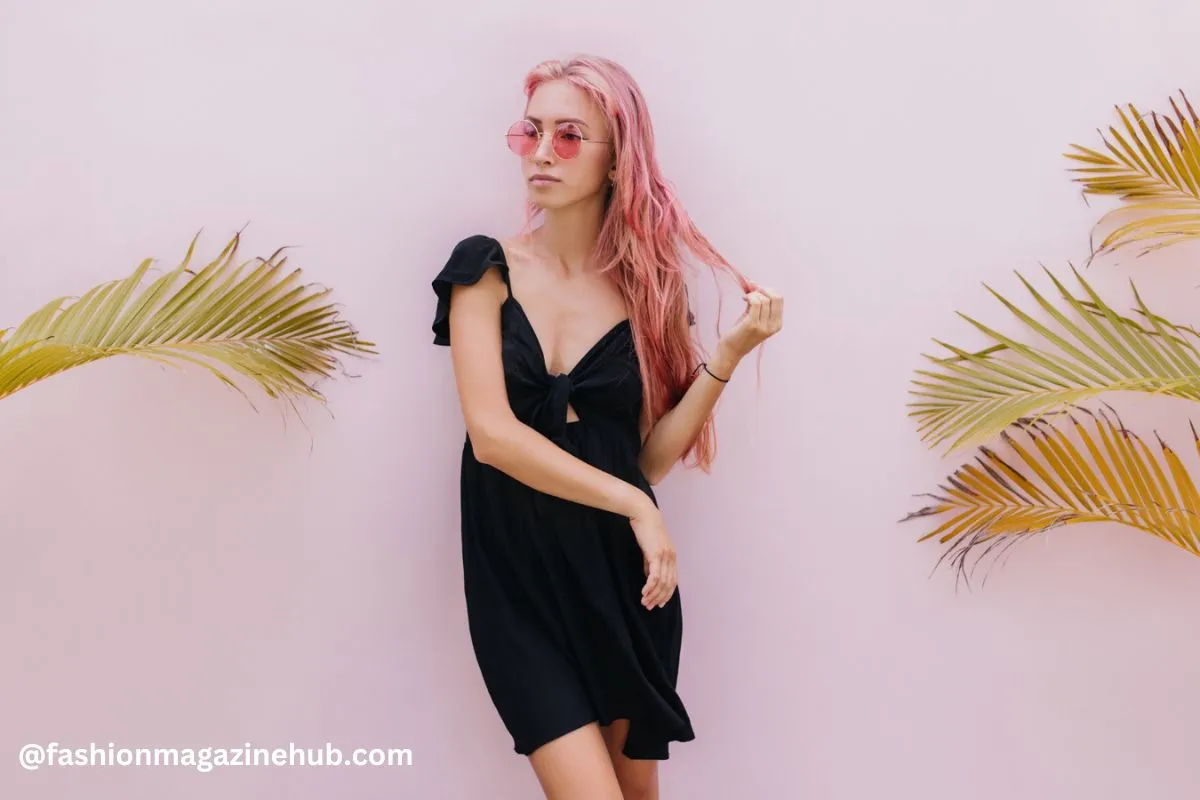Pastel Pink Hair: Styling Tips and Ideas For Every Hair Type
Welcome to the enchanting world of pastel pink hair! In recent years, this soft and dreamy hair color has taken the beauty industry by storm, captivating hearts and turning heads wherever it goes. From its humble beginnings as a niche trend to becoming a mainstream favorite, pastel pink hair has evolved into a symbol of individuality, creativity, and self-expression. This article will delve into the fascinating history of pastel pink hair, exploring its origins, the evolution of the color trend, and the influence of pop culture icons and celebrities. Whether you’re considering embracing this whimsical hue or simply curious about its allure, join me on this journey as we uncover styling tips and ideas for every hair type to help you rock your own pastel pink look with confidence and flair.
History of Pastel Pink Hair
Pink hair has a long and fascinating history that dates back to ancient civilizations where natural dyes were used to color hair. However, the modern fascination with pastel pink hair can be traced back to the 1970s and 1980s when punk rockers and rebellious youth began experimenting with unconventional hair colors as a form of self-expression. The vibrant and bold nature of pink hair quickly caught on as a symbol of individuality and non-conformity.
As the years went by, pastel pink hair evolved from being associated solely with counterculture movements to becoming a mainstream trend embraced by people of all ages and backgrounds. With advancements in hair dye technology, achieving the perfect shade of pastel pink became more accessible, leading to its widespread popularity in the beauty industry. Today, pastel pink hair is not just a fashion statement but a way for individuals to showcase their creativity and unique sense of style.
Origins of Pastel Hair Trend
The origins of the pastel hair trend can be traced back to the early 2010s when unconventional hair colors started gaining popularity among fashion-forward individuals looking to make a bold statement. Pastel pink, in particular, emerged as a favorite choice due to its soft and whimsical appeal that added a touch of femininity to one’s overall look. Influenced by the rise of social media platforms like Instagram and Pinterest, where users could easily share and discover new trends, pastel pink hair quickly became a sensation.
As more people experimented with pastel hues, including lavender, mint green, and baby blue, the trend evolved into a symbol of self-expression and creativity. What started as a niche trend within alternative subcultures soon crossed over into mainstream fashion and beauty scenes. The allure of pastel pink hair lies in its ability to transform one’s appearance while still maintaining an air of elegance and sophistication. Whether you’re aiming for a subtle hint of color or a full-on cotton candy-inspired mane, pastel pink hair offers endless possibilities for personal style exploration.
Evolution of Pink Hair Color
Pink hair color has undergone a fascinating evolution over the years, transforming from a bold statement to a versatile and widely embraced trend. In the past, pink hair was often associated with rebellion and counterculture movements, symbolizing non-conformity and individuality. However, as fashion and beauty norms have shifted, pink hair has become more mainstream and accepted as a fun and creative way to express oneself.
The evolution of pink hair color can be attributed to advancements in hair dye technology, which have made it easier for people of all hair types to experiment with different shades of pink. From soft pastel hues to vibrant neon tones, there is now a wide range of pink shades available that cater to diverse preferences.
Influence of Pop Culture and Celebrities
In recent years, the trend of pastel pink hair has been significantly influenced by pop culture and celebrities. Celebrities like Katy Perry, Nicki Minaj, and Lady Gaga have all rocked various shades of pink hair, sparking a wave of inspiration among their fans and followers. Their bold fashion choices and fearless experimentation with hair colors have played a crucial role in popularizing the pastel pink trend.
How To Achieve Pastel Pink Hair
Achieving pastel pink hair is an exciting journey that allows you to express your unique style and personality. Before diving into the world of pastel hues, it’s essential to consider your current hair color and type. For those with light blonde or bleached hair, achieving pastel pink tones may be easier as the light base allows the color to show up more vibrantly. However, if you have darker hair, you may need to pre-lighten your strands to achieve the desired pastel effect.
To achieve a beautiful pastel pink shade, it’s crucial to choose a high-quality semi-permanent or demi-permanent hair dye specifically formulated for pastel colors. These dyes are often less damaging than traditional permanent dyes and can give you the soft, dreamy pink hue you’re looking for. Remember to follow the instructions on the product carefully and conduct a strand test beforehand to ensure you achieve your desired shade.
Different Methods of Dyeing Hair Pink
When it comes to dyeing your hair pastel pink, there are several methods you can choose from depending on your preferences and hair type. One popular method is using semi-permanent or temporary hair dyes specifically formulated for pastel shades. These dyes are gentle on the hair and typically last for a few weeks before fading, making them a great option for those who want to experiment with pink hair without committing long-term.
Another method is bleaching your hair to a light blonde shade before applying a pastel pink dye. This process ensures that the pink color appears vibrant and true to the shade you desire. However, it’s important to note that bleaching can be damaging to the hair, so it’s crucial to follow up with proper care and conditioning treatments.
Tips For Achieving The Perfect Shade
When it comes to achieving the perfect pastel pink shade for your hair, there are a few key tips to keep in mind. First and foremost, it’s important to start with a light base color, preferably a pale blonde or white, to ensure that the pink dye appears vibrant and true to its hue. If your hair is naturally dark, you may need to bleach it multiple times to achieve the desired lightness before applying the pink dye.
Another tip is to choose the right shade of pink that complements your skin tone. Cool-toned pinks like cotton candy or baby pink work well for those with fair skin, while warmer tones like rose gold or peachy pink can complement medium to darker skin tones.
Maintenance and upkeep of pastel hair
Maintaining and keeping up with pastel pink hair requires some effort, but the results are definitely worth it. To ensure your color stays vibrant and fresh, it’s essential to use color-safe shampoo and conditioner specifically formulated for colored hair. Washing your hair with cold water can also help in preserving the color intensity by sealing the hair cuticles.
Regular touch-ups are crucial to prevent your pastel pink from fading or turning brassy. Depending on how fast your hair grows and how quickly the color fades, you may need touch-ups every 4-6 weeks. Deep conditioning treatments can help keep your hair healthy and hydrated, preventing breakage and maintaining the softness of your pastel locks. Additionally, minimizing heat styling and protecting your hair from UV rays can also contribute to prolonging the life of your pastel pink hue. By following these maintenance tips, you can enjoy your beautiful pastel pink hair for longer periods between salon visits.
Impact of Pastel Pink Hair
Pastel pink hair is more than just a trendy hair color choice; it has the power to make a significant impact on both the individual wearing it and those around them. Embracing pastel pink locks can boost confidence and self-expression, allowing individuals to showcase their unique personality and creativity. The soft and whimsical hue of pastel pink hair often symbolizes femininity, playfulness, and a sense of individuality, making it a popular choice for those looking to break away from traditional hair colors.
Perception of Pink Hair In Pociety
Pink hair has long been associated with creativity, individuality, and a sense of whimsy. In society, the perception of pink hair has evolved over time, transitioning from being seen as unconventional to becoming a trendy and fashionable choice for many. While some may still hold onto traditional views that colored hair is unprofessional or rebellious, the acceptance and appreciation of pastel pink hair have grown significantly in recent years.
In today’s society, pink hair is often embraced as a form of self-expression and empowerment. It allows individuals to showcase their unique style and personality without conforming to societal norms. Many people view pastel pink hair as a symbol of confidence and boldness, breaking free from the constraints of conventional beauty standards. As more celebrities and influencers rock pink locks on red carpets and social media platforms, the perception of pink hair continues to shift towards being a chic and glamorous choice rather than a taboo or outlandish one. Ultimately, how one perceives pink hair in society largely depends on their openness to diversity and willingness to embrace individuality in all its colorful forms.
Breaking Gender Norms and Stereotypes
Pastel pink hair has become a symbol of breaking gender norms and stereotypes in the realm of hair color. Traditionally, certain colors have been associated with specific genders, with pink often being linked to femininity. However, the rise in popularity of pastel pink hair among people of all genders has challenged these outdated notions. By embracing this soft and whimsical hue, individuals are asserting their right to express themselves freely without conforming to societal expectations based on gender.
The versatility of pastel pink hair allows for endless possibilities in styling and self-expression, regardless of one’s gender identity. Whether styled in a bold pixie cut or flowing locks, pastel pink hair serves as a powerful statement that defies conventional norms. This trend not only encourages creativity but also fosters inclusivity by creating a space where individuals can explore different facets of their identity through their unique choice of hair color. Breaking away from traditional gender stereotypes, pastel pink hair empowers individuals to embrace their authentic selves and celebrate diversity in beauty and self-expression.
Empowerment and Self-Expression Through Hair Color
Pastel pink hair is not just a trend; it’s a powerful form of self-expression and empowerment. Choosing to dye your hair this soft, whimsical hue can be a bold statement of individuality and confidence. It allows you to break free from societal norms and embrace your unique style without fear of judgment. The act of coloring your hair in such a vibrant shade can feel liberating, like shedding old skin and stepping into a new, more authentic version of yourself.
For many people, pastel pink hair serves as a visual representation of their inner creativity and personality. It’s a way to communicate without words, showcasing their playful, daring spirit to the world. The process of transforming your hair color can be an empowering experience that boosts self-esteem and encourages you to embrace your true identity unapologetically. So, whether you’re looking for a subtle change or a complete transformation, don’t underestimate the power that pastel pink hair can have in helping you express yourself confidently and authentically.
Criticisms and Controversies Surrounding Pastel Pink Hair
Pastel pink hair has undoubtedly gained popularity in recent years as a trendy and bold choice for self-expression through hair color. However, with its rise in popularity, criticisms and controversies have also emerged surrounding this unique hair trend. One common criticism is that pastel pink hair is often seen as unprofessional or inappropriate for certain settings, such as conservative workplaces or formal events. This perception stems from traditional ideas about what constitutes acceptable hair colors in professional environments.
Negative Reactions and Stereotypes
It’s no secret that pastel pink hair can sometimes attract negative reactions and stereotypes from certain individuals. Some people may view unconventional hair colors as unprofessional or inappropriate, especially in more conservative environments. There is a prevailing notion that vibrant hair colors are associated with rebellion or nonconformity, which can lead to judgment or prejudice from others.
Cultural Appropriation and Sensitivity
When it comes to the trend of pastel pink hair, one important aspect that cannot be overlooked is the issue of cultural appropriation and sensitivity. The concept of cultural appropriation refers to the adoption or use of elements from a culture that is not your own, often without understanding or respecting the significance behind those elements. In the context of pastel pink hair, some critics argue that this trend may appropriate aspects of Asian culture, particularly Japanese Harajuku fashion and anime characters who often sport colorful hair.
It’s crucial for individuals considering rocking pastel pink locks to be mindful of the potential implications and to approach this trend with respect and understanding. While expressing oneself through hair color can be empowering and liberating, it’s essential to educate oneself on the origins and meanings behind certain styles or colors. By being sensitive to cultural influences and showing appreciation rather than appropriation, we can enjoy experimenting with different looks while also honoring diverse cultures and traditions.
Addressing and Challenging Criticisms
I understand that pastel pink hair may not be everyone’s cup of tea, and it often faces criticisms for being too bold or unconventional. However, I believe that embracing pastel pink hair is a form of self-expression and creativity that should be celebrated rather than judged. One common criticism is that pastel pink hair is difficult to maintain and fades quickly. While it’s true that maintaining pastel pink hair requires some effort, with the right products and care routine, you can keep your color vibrant for longer periods.
Another criticism is that pastel pink hair may not suit all skin tones or hair types. It’s essential to remember that there are various shades of pastel pink, ranging from soft baby pink to peachy rose hues, so there’s a shade out there for everyone.
Conclusion
In conclusion, embracing pastel pink hair is not just about following a trend; it’s about expressing your individuality and creativity through your personal style. Regardless of your hair type or texture, there are endless possibilities for styling and rocking this unique color with confidence. By addressing and challenging any criticisms or doubts that may come your way, you are taking a bold step towards self-expression and empowerment. Remember, beauty is subjective, and what matters most is how you feel when you look in the mirror. So go ahead, experiment with different hairstyles, accessories, and makeup looks to complement your pastel pink locks. Let your hair be a reflection of your vibrant personality and fearless spirit. Embrace the pink hue with pride, knowing that you are beautiful just the way you are.
FAQs
What is pastel pink hair?
Pastel pink hair refers to a soft, light shade of pink hair color that resembles the hues of pastel art. It’s popular for its dreamy and ethereal appearance.
Can I achieve pastel pink hair at home?
Yes, you can achieve pastel pink hair at home with the right products and techniques. However, it’s recommended to consult a professional colorist for best results.
How do I maintain pastel pink hair?
To maintain pastel pink hair, use sulfate-free shampoo, wash with cool water, and avoid frequent heat styling. Regular touch-ups and deep conditioning treatments can help preserve color vibrancy.
Will pastel pink hair suit my skin tone?
Pastel pink hair can complement various skin tones, but the shade might need adjustment based on undertones. Consult a colorist to find the most flattering pastel pink shade for you.
How long does pastel pink hair color last?
Pastel pink hair color typically lasts between 4 to 6 weeks, depending on how well it’s maintained and the initial condition of your hair.
Can I bleach my hair at home to achieve pastel pink?
Bleaching should ideally be done by a professional to minimize damage. DIY bleaching can result in uneven color and hair damage, affecting the final pastel pink result.
What hairstyles look best with pastel pink hair?
Pastel pink hair pairs well with loose waves, braids, and updos that highlight its soft hues. Regular trims are crucial for maintaining freshness and preventing hair from becoming excessively long or unruly.
Is pastel pink hair high maintenance?
Yes, pastel pink hair requires regular touch-ups and special care to maintain its color intensity. Using color-safe products and avoiding excessive heat styling can extend its lifespan.
Can I dye over pastel pink hair with another color?
Pastel pink hair can be dyed over with another color after fading or if you wish to change your look. Consult a professional colorist to ensure the best results without damaging your hair.
Is pastel pink hair suitable for all ages?
Pastel pink hair can be embraced by individuals of all ages who want to explore a playful and trendy hair color. It’s a versatile choice that can be customized to suit different lifestyles and preferences.
Weave on Thin Hair: The Ultimate Guide To Choosing The Right Extensions
Thank you for exploring our Blog! For additional captivating content, feel free to explore the website.


















Post Comment